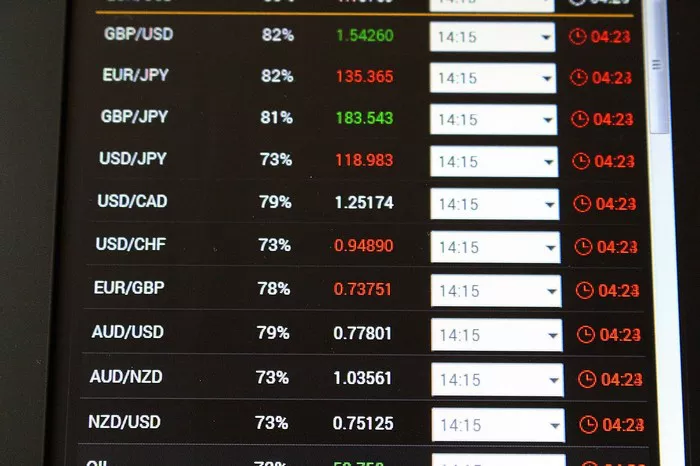A call option is a financial contract that gives the buyer the right, but not the obligation, to buy a stock at a specific price within a certain period. This type of option is widely used in the stock market by traders, investors, and institutions to manage risk, speculate on price movements, and generate income.
Understanding call options is essential for anyone looking to engage in options trading or expand their investment strategies. This article explains what a call option is, how it works, why investors use it, and the risks and benefits involved.
Understanding Call Options
Definition of a Call Option
A call option is a contract that allows the buyer to purchase a stock at a predetermined price, known as the strike price, before the expiration date. Unlike buying stocks directly, a call option does not require the investor to own the stock. Instead, the investor pays a premium for the right to buy the stock at the agreed price.
If the stock price rises above the strike price, the call option gains value, and the investor can either exercise the option or sell it for a profit. If the stock price does not rise, the option may expire worthless, and the investor loses only the premium paid.
How a Call Option Works
A call option consists of several key components:
Underlying asset – The stock or financial instrument the option is based on.
Strike price – The price at which the investor can buy the stock.
Expiration date – The date by which the investor must exercise the option.
Premium – The price paid for the option contract.
When an investor buys a call option, they are betting that the stock price will rise above the strike price before expiration. If the stock price increases, the call option becomes more valuable. If the stock price remains below the strike price, the option expires worthless.
For example, suppose an investor buys a call option for a stock trading at $50 with a strike price of $55 and an expiration date in one month. If the stock rises to $60, the investor can exercise the option and buy the stock at $55, making a profit. If the stock stays below $55, the investor loses only the premium paid.
Reasons for Buying Call Options
Investors use call options for various purposes, including speculation, hedging, and income generation.
Speculation
Many traders use call options to speculate on stock price movements. Since options require a smaller initial investment than buying stocks, they provide an opportunity for higher returns. If the stock price increases significantly, the investor can profit from the price difference while limiting the loss to the premium paid.
Hedging
Call options are also used as a hedge to protect against potential losses. Investors who own stocks may buy call options to lock in a purchase price in case the stock price rises sharply. This strategy helps manage risk and provides flexibility in investment decisions.
Income Generation
Some investors sell call options as part of a covered call strategy. By selling call options on stocks they already own, investors collect premiums, generating additional income while agreeing to sell the stock at a predetermined price if the option is exercised.
Types of Call Options
Call options come in different types based on their exercise style and expiration period.
American vs. European Options
American options – Can be exercised at any time before the expiration date.
European options – Can only be exercised on the expiration date.
Most stock options in the U.S. are American-style, while index options are often European-style.
Short-Term vs. Long-Term Options
Short-term options – Expire within weeks or months.
Long-term options – Also known as LEAPS (Long-Term Equity Anticipation Securities), these options can have expiration dates up to three years in the future.
Long-term options allow investors to take advantage of long-term price movements while maintaining flexibility.
Risks of Buying Call Options
While call options can provide significant returns, they also carry risks that investors must consider.
Limited Time Frame
Call options have an expiration date, meaning investors must accurately predict price movements within a specific period. If the stock price does not increase before expiration, the option becomes worthless.
Loss of Premium
If an investor buys a call option and the stock price does not reach the strike price, they lose the entire premium paid for the option. Unlike stocks, which retain some value even if prices decline, call options can lose all their value.
High Market Volatility
Stock prices can be unpredictable, making it difficult to determine whether a call option will become profitable. Changes in market conditions, earnings reports, and economic events can all impact stock prices.
Impact of Implied Volatility
Implied volatility measures market expectations for future price movements. If volatility increases, the option price rises, and if volatility decreases, the option price falls. Investors must consider volatility when buying call options, as it can affect profitability.
Examples of Call Option Strategies
Investors use various strategies to maximize profits and manage risks when trading call options.
Buying Calls (Long Call)
A long call strategy involves buying a call option with the expectation that the stock price will rise. This strategy provides unlimited profit potential while limiting losses to the premium paid.
For example, if an investor buys a call option for a stock trading at $100 with a strike price of $110, they will profit if the stock rises above $110 before expiration. If the stock price remains below $110, the investor loses only the premium paid.
Selling Covered Calls
A covered call strategy involves selling call options on stocks the investor already owns. The investor collects a premium while agreeing to sell the stock if the option is exercised.
For example, if an investor owns 100 shares of a stock trading at $50 and sells a call option with a strike price of $55, they collect the premium but must sell the shares if the stock reaches $55. This strategy generates income but limits upside potential.
Spreads and Combinations
Traders use spread strategies to reduce risk and control costs. A bull call spread, for example, involves buying a call option at a lower strike price and selling another call option at a higher strike price. This strategy limits both potential profit and risk.
How to Trade Call Options
Trading call options involves several steps:
Choose the stock – Select a stock with potential for price growth.
Select the strike price – Choose a strike price based on expected price movements.
Decide on the expiration date – Pick an expiration date that aligns with the investment goal.
Determine the premium – Analyze the option’s price and cost.
Execute the trade – Place the order through a brokerage account.
Investors should also monitor their options and consider closing positions before expiration if necessary.
Regulations and Considerations
Options trading is regulated to ensure fair market practices. The Securities and Exchange Commission (SEC) and the Financial Industry Regulatory Authority (FINRA) oversee options trading in the U.S.
Margin Requirements
Investors must meet margin requirements when trading options, especially when selling call options. Brokers may require additional funds to cover potential losses.
Options Trading Approval
Most brokerages require investors to apply for options trading approval. Traders must provide financial information and trading experience before gaining access to advanced options strategies.
Risk Disclosure
Due to the risks involved, investors must read and understand the risks of options trading before engaging in transactions. Many brokerages require traders to acknowledge the risks before placing options trades.
Conclusion
Call options are a powerful financial tool that allows investors to profit from rising stock prices while managing risk. They offer opportunities for speculation, hedging, and income generation but also come with risks, including the potential for total loss of the premium and market volatility.
By understanding how call options work, the risks involved, and different trading strategies, investors can make informed decisions and maximize their returns. Options trading requires careful analysis and risk management, making it essential for investors to develop a well-thought-out strategy before entering the market.
Related topics:


































